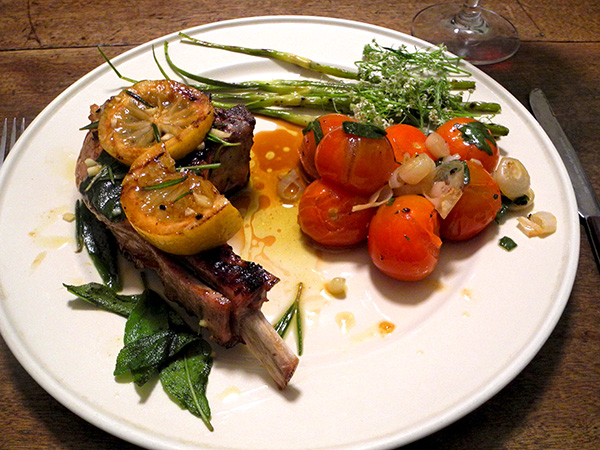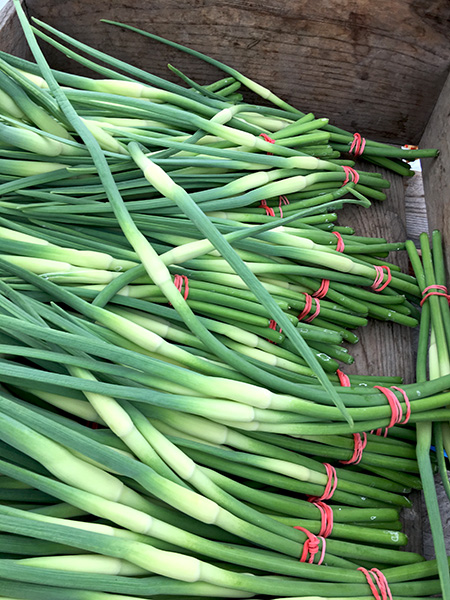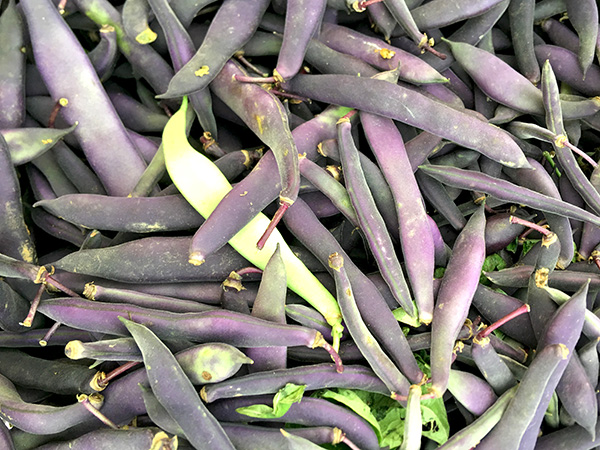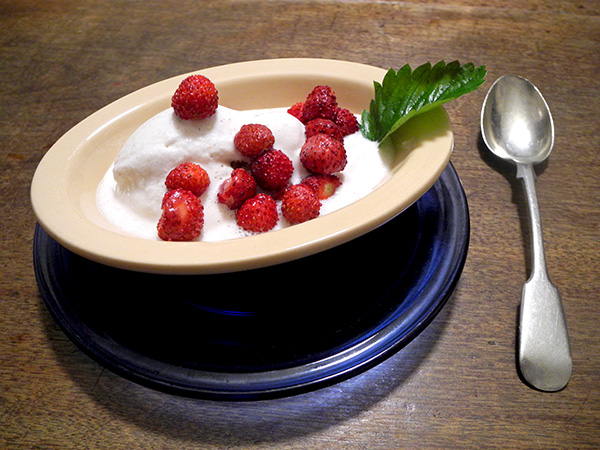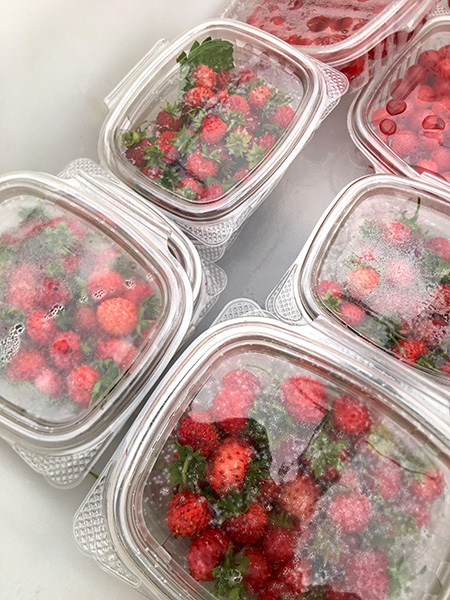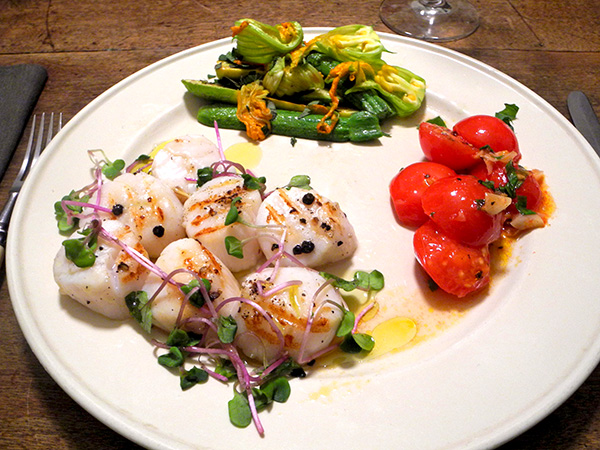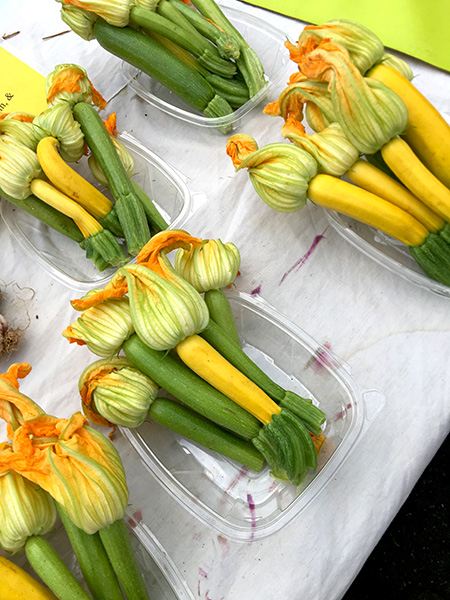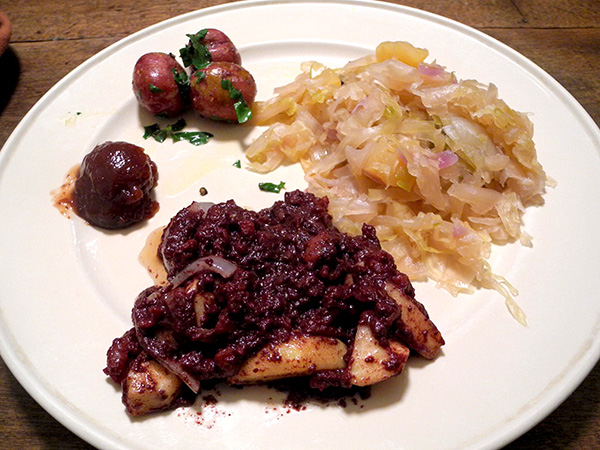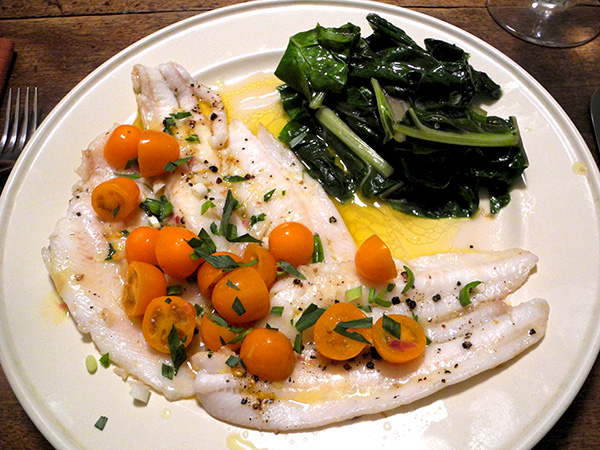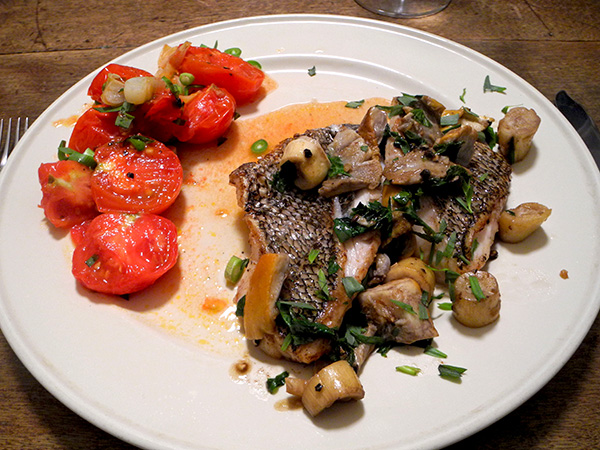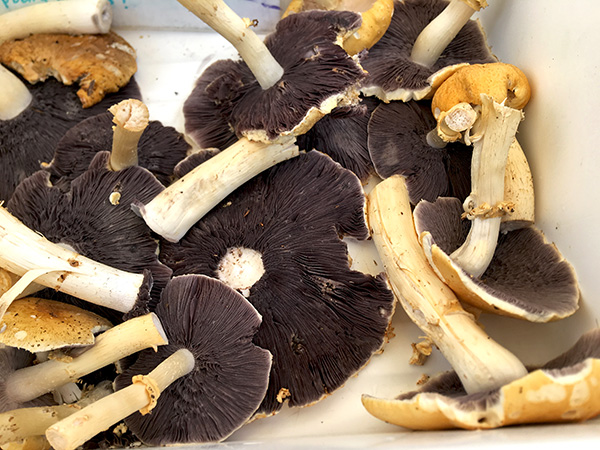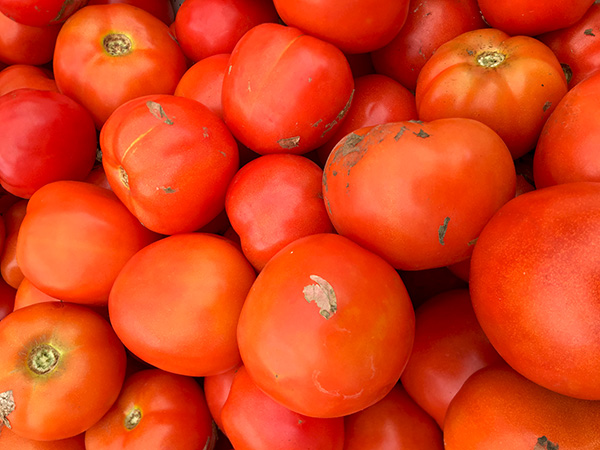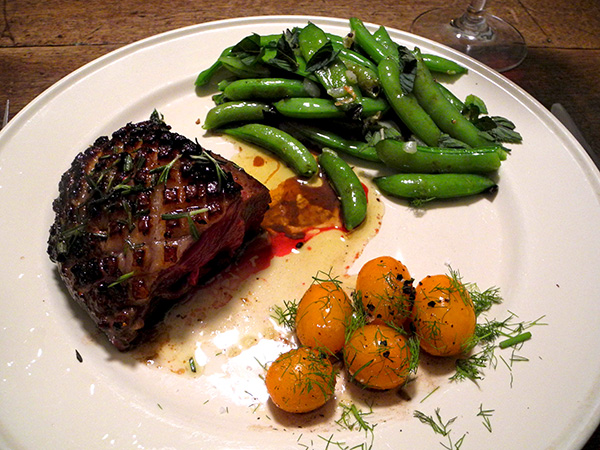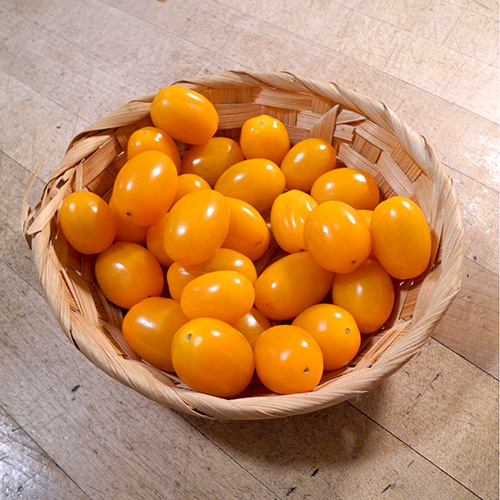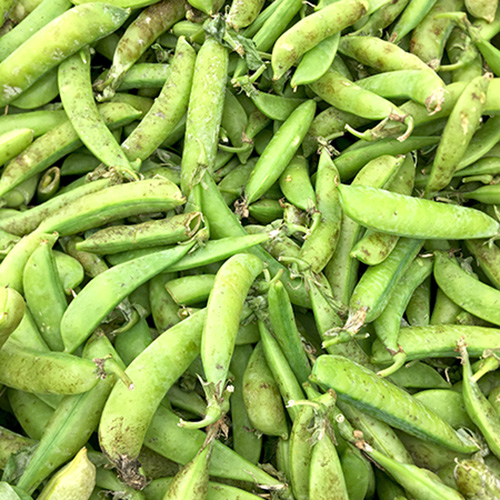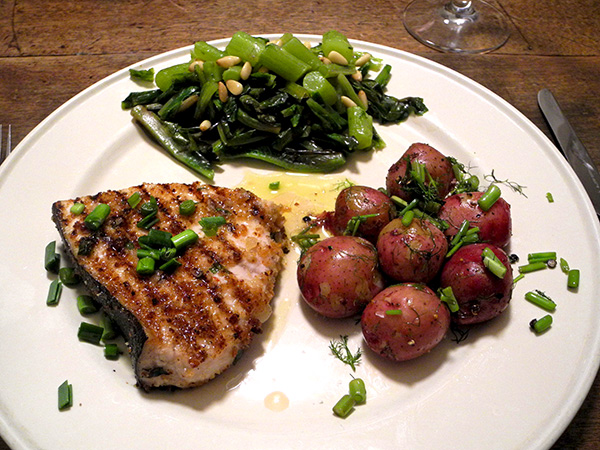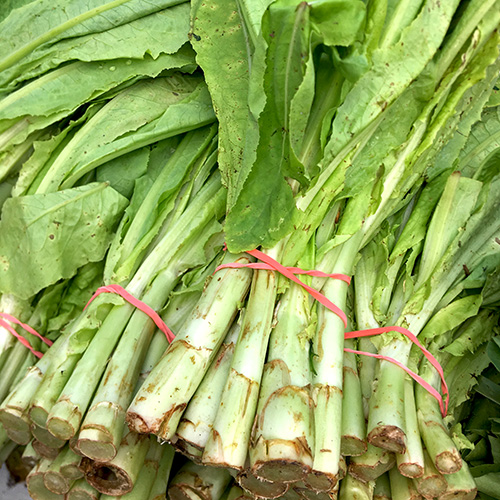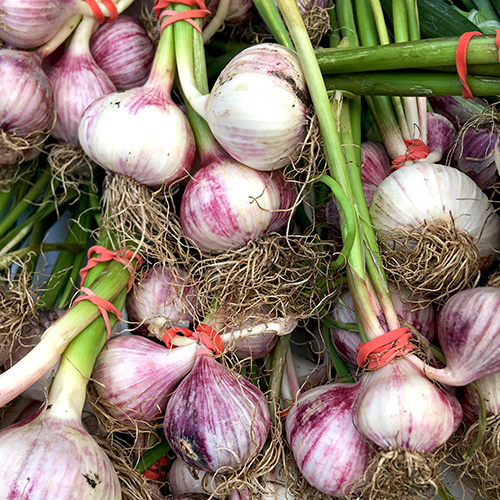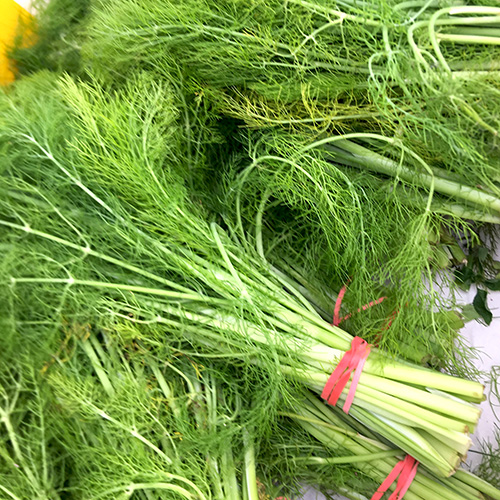
I managed to get the last piece of striped bass in the Greenmarket on Friday. Fortunately, because it’s probably the most expensive fish in any East Coast market these days, it was exactly the right, modest proportion for the two of us. I blame the high cost on demand, and a general lack of imagination on the part of my fellow consumers, but it really is a great fish, beginning with its appearance, seen here lying on our kitchen counter before I started dinner.
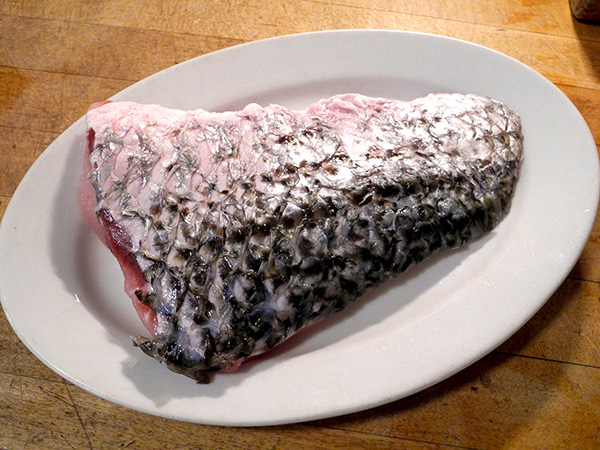
I can’t continue without mentioning the near death of the species, mostly because of over-fishing. By the 70s and 80s, ‘Stripers’ were considered endangered, but then there was a rescue, described by Paul Greenberg in a 2008 New York Times article, ‘Bass Market‘:
“In a major conservation act, a consortium of states halted striped-bass fishing in the ’80s, and a program was introduced to rebuild the breeding stock in the Chesapeake Bay. … Today striper populations are listed as ‘fully rebuilt,’…”
The vegetables, as special as the fish, were Castelfranco radicchio (cichorium intybus excultus?) and fava beans (vicia faba).
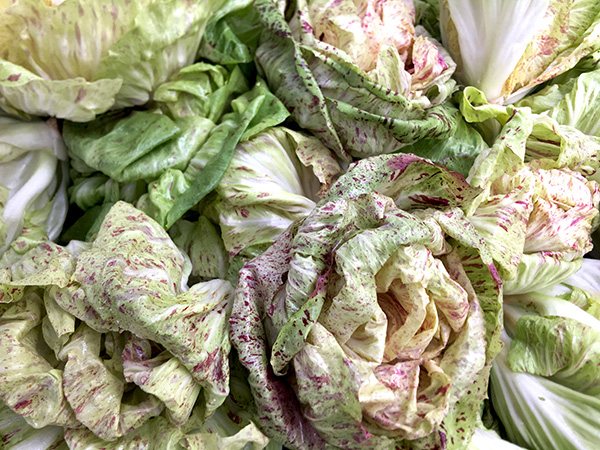
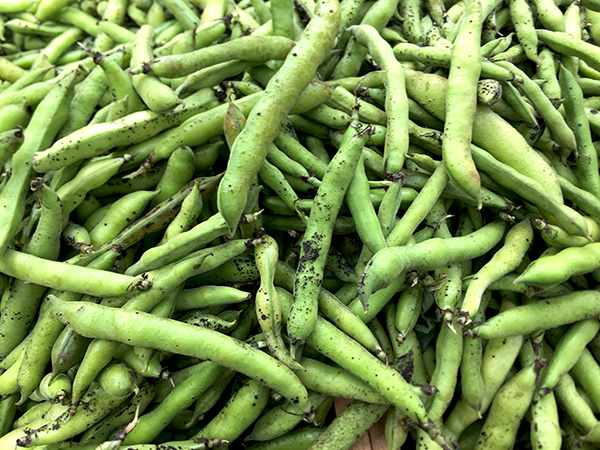
- one twelve-ounce striped bass fillet from Pura Vida Seafood, rinsed, drained, seasoned on both sides with sea salt and freshly-ground Tellicherry pepper, placed, skin side down, in a little olive oil inside a pre-heated heavy tin-lined copper pan over a medium-high flame, a similar heavy pan, oiled on the bottom, pressed on top of the fillet for the first 2 minutes to flatten it and assist in rendering the skin crisp (actually, I’m not sure the process worked, but, hey..), the fish turned over after about 5 minutes in the pan and cooked for another 2 or 3 minutes, removed and arranged on the plates, brushed or spooned with a mixture of chopped lovage from Keith’s Farm. leaves torn off of a live basil plant from Stokes Farm, the zest from half of an organic lemon from Whole Foods Market, and enough olive oil to barely make a liquid sauce
- fava beans (I would have to say there are never enough of these emeralds, especially considering how little is left after laboriously shelling over a pound in the shell) from Alewife Farm, added to a vintage Pyrex transparent glass pan in which one thinly-sliced red onion from Norwich Meadows Farm had been heated in olive oil and softened, the vegetables seasoned with sea salt and frehsly-ground Tellicherry pepper, and tossed with chopped peppermint from Lani’s Farm
- one head of Castelfranco radicchio from Campo Rosso Farm, washed, quartered, tied with string to keep the leaves together, dipped in seasoned olive oil then pan grilled briefly (only 30 seconds on each of the 3 sides), arranged on the plates, the strings cut and removed, drizzled with a dressing composed of one salted anchovy, thoroughly rinsed and filleted, a teaspoon of white wine, 2 tablespoons of oil, one and a half tablespoons of juice of an organic lemon from Whole Foods Market, and a generous amount of chopped parsley from Phillips Farm
- the wine was a California (Andrus, in the Sacramento-San Joaquin River Delta) white, Jacqueline Bahue Albarino Gomes Vineyard California 2016, from Naked Wines
- the music was Claudio Monteverdi’s 1642 opera, ‘L’Incoronazione di Poppea’, René Jacobs conducting the Amsterdam ensemble, Concerto Vocale
